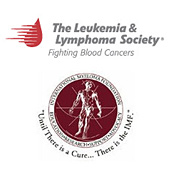Menu
The Metzger Law Group supports the Leukemia & Lymphoma Society and the International Myeloma Foundation


Firefighter Health and Safety Hazards
Firefighter Health and Safety Hazards include:
1. Biological hazards
- While helping fire or accident victims, firefighters may be exposed to infectious diseases including blood borne diseases such as AIDS and hepatitis B and C.
2. Chemical hazards
- Toxic combustion products, including carbon monoxide, hydrogen cyanide, nitrogen dioxide, benzene, and polycyclic aromatic hydrocarbons.
- Oxygen depletion resulting in hypoxia, confusion and inability to escape.
3. Ergonomic hazards
- There are many situations where physical demands involve force, repetition, awkward postures and prolonged activities, including overexertion, walking and standing for long periods of time, and lifting heavy objects.
4. Physical hazards
- Heat stress is common. Heat may come from various sources including the fire and surroundings, but heat is also produced by the body during work (exercise). Heat stress is worsened by protective clothing and continuous physical exertion.
- Excessive noise exposure with resultant hearing loss and impairment.
- Extreme temperatures (both heat and cold) from working outdoors.
- Burn hazards from sudden ignition of products creating flashover and backdraft.
5. Safety hazards
- In fires, there are risks of injury (from fire itself, structures breaking, unstable floors, falling objects, etc.). Falls from working at heights are also common.
- Traffic accidents from travel to fires at high speeds and poor weather conditions.
6. Psychological hazards
- Firefighters are exposed to critical events where there is often grave or uncertain danger. Exposure to serious traumatic events (or consequences of the event) is another cause of stress. As with most emergency services, there are long periods of quiet or routine interrupted abruptly by periods of intense stress or activity.
- Increased injury hazards from work shifts and extended work days.
7. Chronic health hazards
- Cancer, especially genito-urinary (including kidney, ureter and bladder), but also brain cancer, lung cancer and and cancers of the lymphatic/hematopoietic system.
- Back injuries and other strains.
- Diseases such as AIDS and hepatitis.
- Cardiovascular disease due to carbon monoxide and other toxic chemicals.
- Lung diseases from exposure to toxic gases produced during fires.
Source: Guidotti, T.L. “Firefighting Hazards.” In Encyclopaedia of Occupational Health and Safety. 4th edition. Geneva: International Labour Office, 1998. Pages 95.4-95.9)



